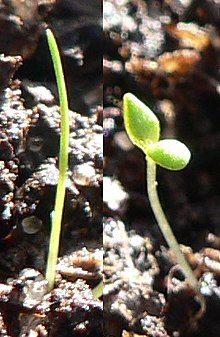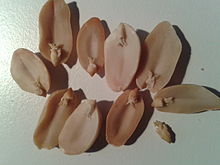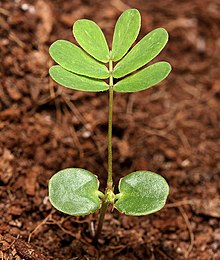Cotyledon
Cotyledons form during embryogenesis, along with the root and shoot meristems, and are therefore present in the seed prior to germination.
True leaves, however, form post-embryonically (i.e. after germination) from the shoot apical meristem, which generates subsequent aerial portions of the plant.
Gnetophytes, cycads, and ginkgos all have 2, whereas in conifers they are often variable in number (multicotyledonous), with 2 to 24 cotyledons forming a whorl at the top of the hypocotyl (the embryonic stem) surrounding the plumule.
As these reserves are used up, the cotyledons may turn green and begin photosynthesis, or may wither as the first true leaves take over food production for the seedling.
[citation needed] Hypogeal plants have (on average) significantly larger seeds than epigeal ones.
[5][6] The ultimate development of the epigeal habit is represented by a few plants, mostly in the family Gesneriaceae in which the cotyledon persists for a lifetime.





